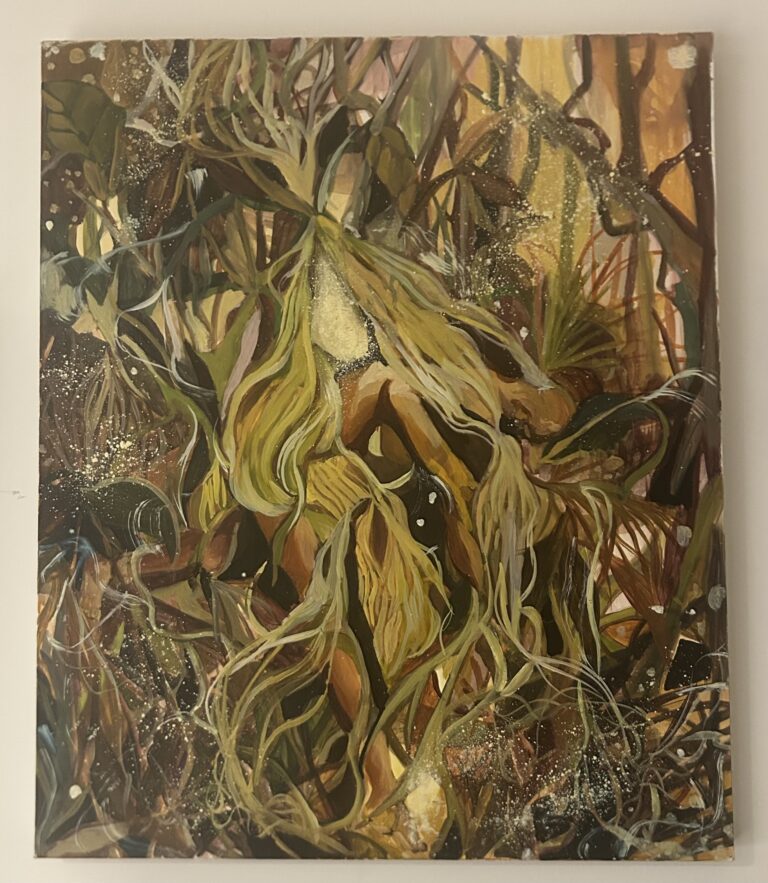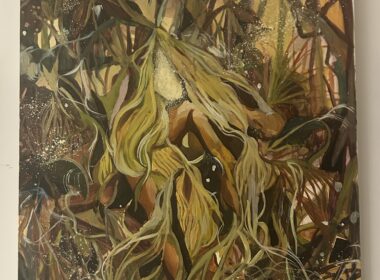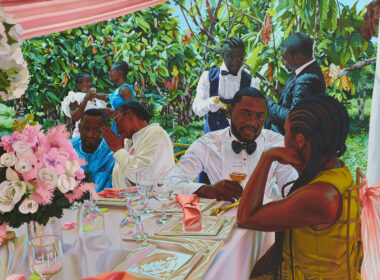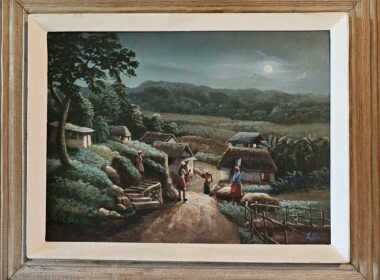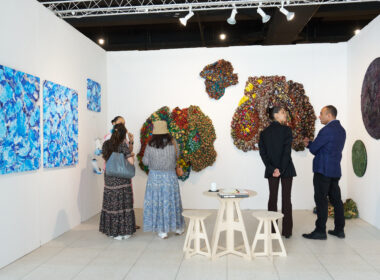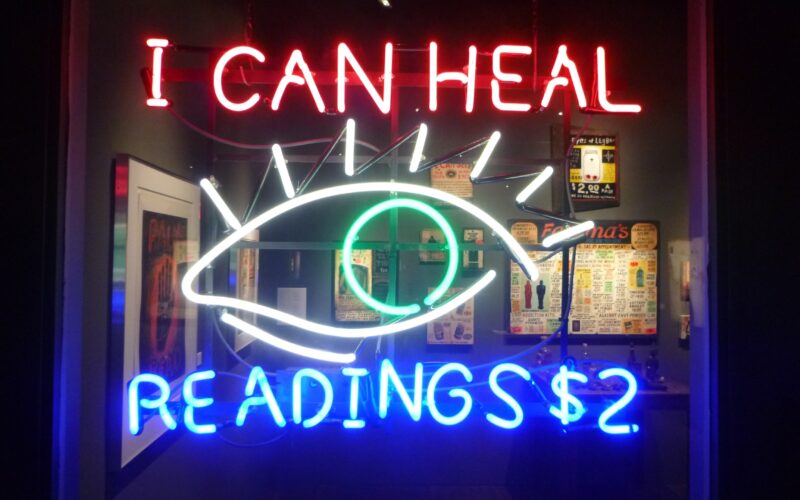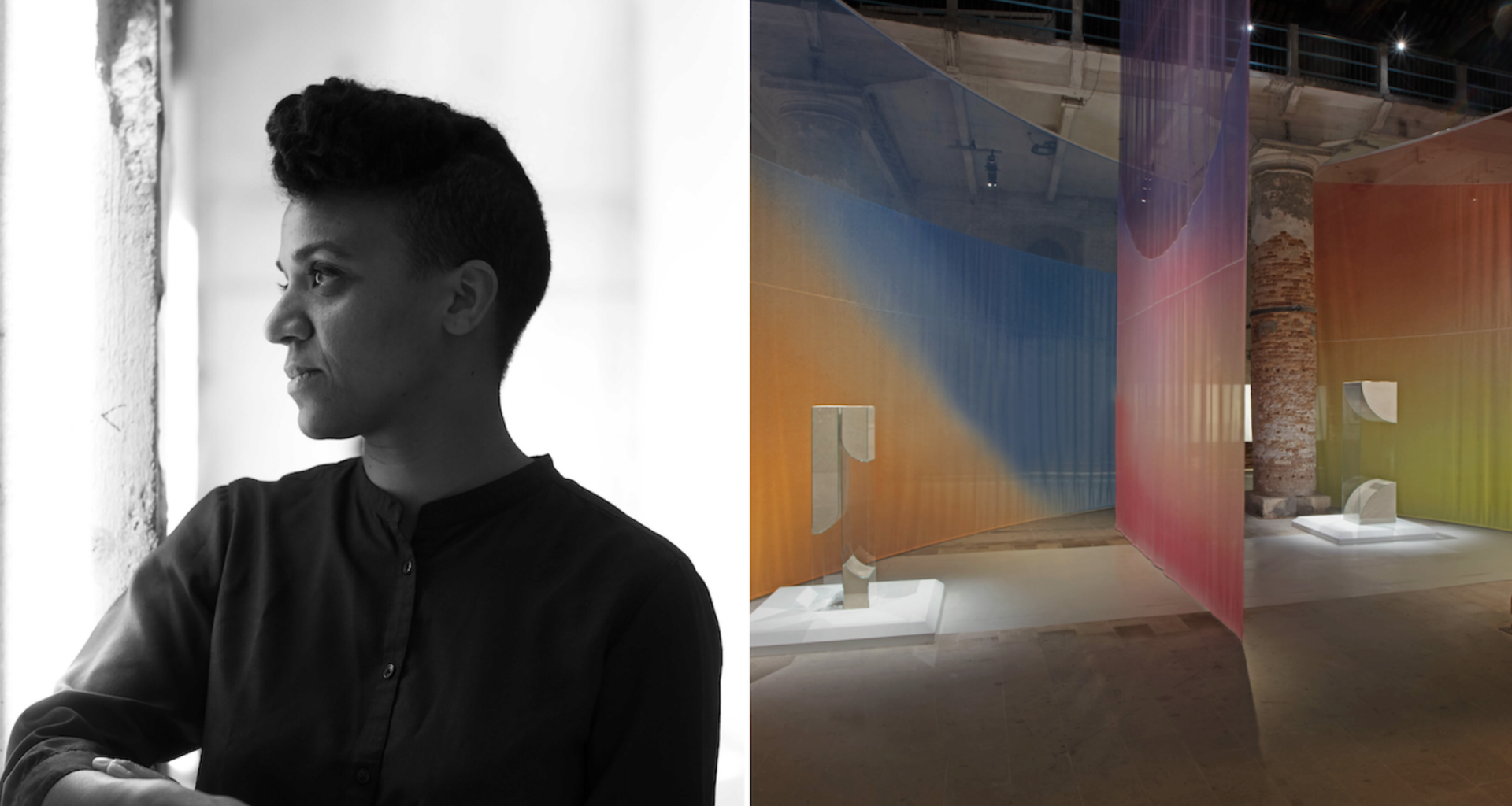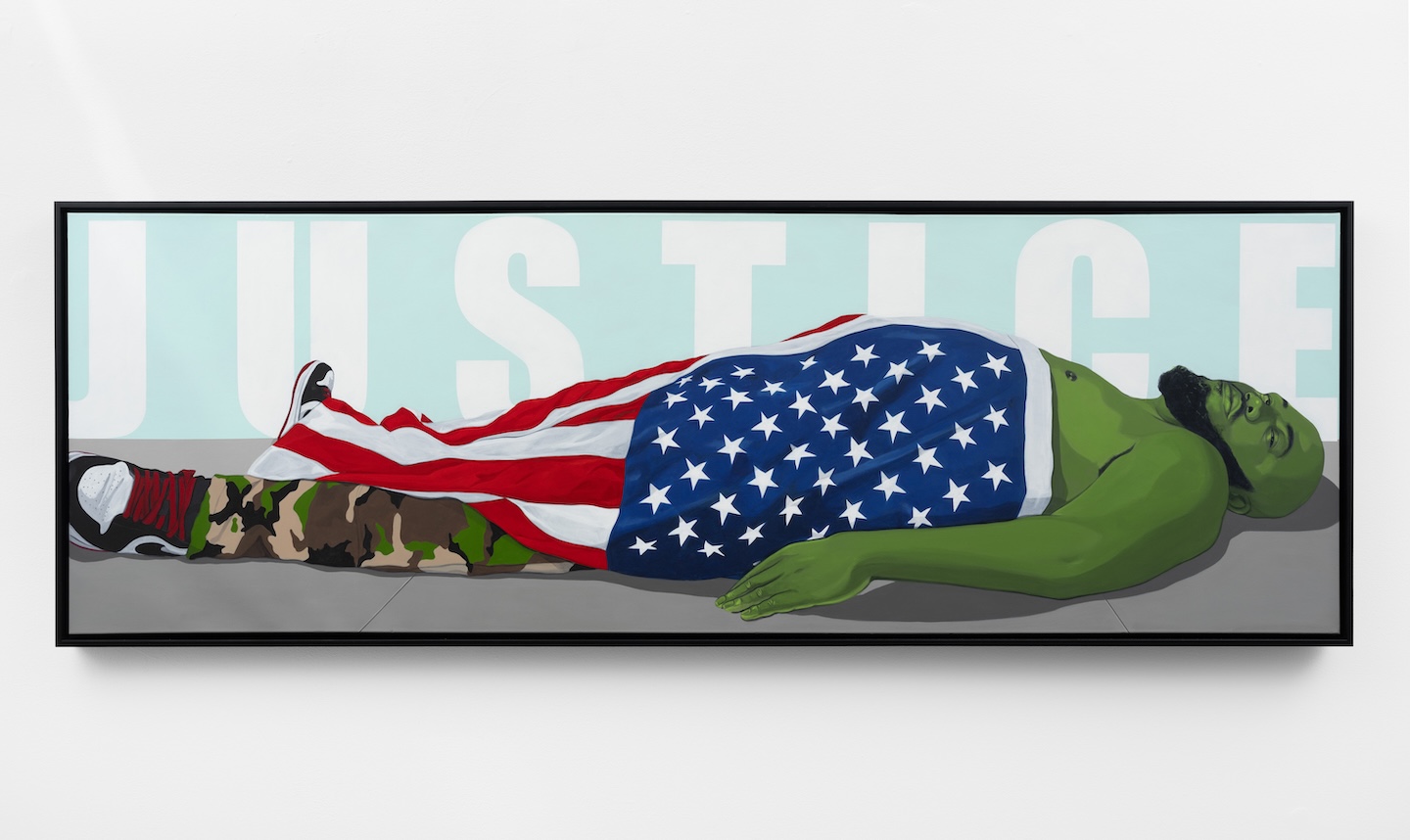Above: Renée Stout, I Can Heal., 2000. Neon sign, 28-1/2 x 36-1/2 x 5 in. Collection of the artist.
You’re music, too. You’re all instruments. Everyone’s supposed to play their part in this vast Arkestra of the cosmos —Sun Ra (Page 128)
In Grime, Glitter, and Glass: The Body and the Sonic in Contemporary Black Art (2024), Dr. Nikki Greene examines discographies of African diaspora music icons. The Breaks are lilts. Grandmaster Flash is attributed to identifying the term, and it became popularized in the Kurtis Blow song of the same name in 1980 after the refrain: “These are the breaks / break it up / break it up / break it up.” The break is seen as an opportunity for musical recomposition, but the song also metamorphosize them as defining moments of how one steps up to the unfortunate curveballs of life.
Ralph Ellison, several decades earlier, described the breaks when he said, “Invisibility let me explain, giving on a slightly different sense of time, you’re never quite on beat. Sometimes you’re ahead and sometimes behind. Instead of the swift and imperceptible flowing of time, you are aware of its nodes, those points where time stands still or from which it leaps ahead.” (Page 3)
Collage has a similar rhythmic improvisation and rearrangement practice to deconstruct, reconstitute and fill space. Romare Bearden, a jazz musician and abstract artist in the 1950s, deliberately showed the artist’s hand through collage by pulling from the index. The index is “… the visual markers of ‘breaks’ in jazz improvisation successfully since the photostat points to the performance of the assemblage of the collage.” (Page 7) Overall, Greene takes us on a journey that reveals a new plane.
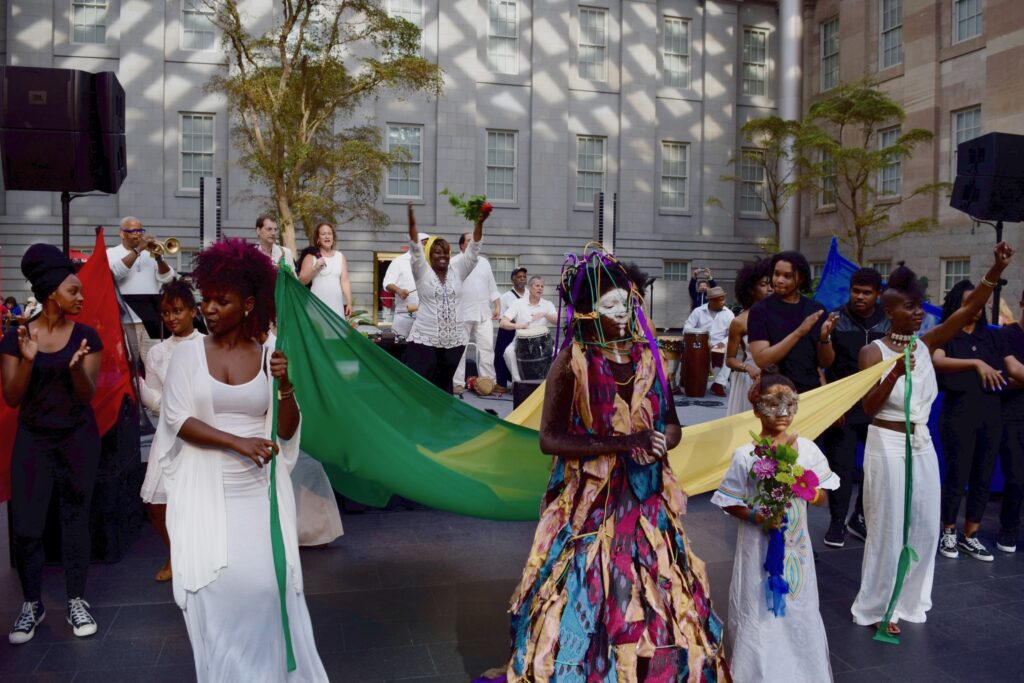
Visual arts in the African diaspora have always been linked to a sonic experience: church denominations have pantomimed to music, Lucumí rituals are equal parts dance, song, call-and-response, and the inexplicable groove in our syncopatic literature and thought. In Grime, Glitter, and Glass: The Body and the Sonic in Contemporary Black Art (2024), Dr. Greene explores the visual discographies of Renee Stout, Radcliffe Bailey, and Magdelena Compos-Pons alongside singer-songwriter Betty Davis, Arrested Development’s Tennessee, Sun Ra, George Clinton, Solange, and the history of rumba and the darling of the genre, Celia Cruz.
Starting with Greene’s thesis on Aaron Douglas (which links our practice, as I explored his compositions as cartographies of struggle and freedom, South and North, and a vehicle by which the New Negro agenda was pushed), jazz was that cultural revolution on and off the canvas. Greene noticed this connection between material and music creating a polyphon; further, she theorized that “the dual concerns of the visual and the sonic allow the artists’ visual voices to be seen/heard as melodic lines in conversation with one another within the contrapuntal structure [of her making].” (Page 9)
Renee Stout, a Black feminist funkstress after Betty Davis’ heart, challenges the ideas of fetish within her work Fetish #2 by casting her body as a nkisi nkondi (a sculpture imbued with a spiritual force) with medicine bundles to activate an inner power as a performance. She also challenges the idea that luster in a Marxist view of fetish is an intrinsic part of the allure (Page 25), juxtaposing her earlier work Maul It! (1985). Instead, a patina suggests constant friction (with, against, and maybe even in a sexualized manner) on the proxy for the artist’s body: “In other words, Stout destabilizes the meaning of a grimy surface as positive, empowering and celebratory by ‘recirculating’ its connotation through the sculpture itself.” (Page 36).
A similar grittiness and vulnerability and awareness of an inner and external gaze in Davis’ voice in Nasty Gal when she sings, “I ain’t nothin’ but a nasty girl now / Ah, hi-hi / I said, you said I was a bitch now, ah-hi / Didn’t ya, didn’t ya / You said I was a witch now / I’m gonna tell ‘em why / You used to love it …”
The section on Radcliffe Bailey, perhaps my favorite in the entire book, connects his role in the 1992 music video of Arrested Development’s Tennessee “scratching” the canvas. Maybe from the personal resonance that Tennessee has for me, as the genesis of my paternal family as self-emancipated people, and the trepidation my dad has for the South by returning “home.”
“In the final 40 seconds of the accompanying music video, during the concluding hook of the song—‘Take me home,’ Bailey intervenes by putting charcoal on a canvas with the depiction of a lynched man disrupting the transcendent portion of the song with ‘haptic temporalities through which quiet photos also register,’” Greene wrote. (Pages 89-90)
Another image of an animate reinterpretation of history is Bailey’s Pullman (2010), a glittering blue, deoxygenated modeled heart encased by glass. This referenced the observative fishbowl effect that Pullman Porters endured as the ”accouterment” of the glorifying of the South based on servitude. But each Porter was a real person with family and stories (my great-grandfather was one of them). The encasing also functions as a modality of preservation and assigns preciousness to the object in which light refracts. The bouncing light alludes to movement and an invisible sonic exchange that interpolates the viewer.
Magdalena Compos-Pons double-codes objects like the Guggenheim (in a dress she wears mimicking the Frank Lloyd Wright structure), water and fish that she pours into the fountain at the same museum, the funerary and intercessional garb in her National Gallery performance, and sugar (as both an object of desire, fragility and entrapment in its glass form). Similar to Stout, her body acts as a vessel as she evokes West African goddess Yemeya and calls for Elegua (a West African deity of roads and paths) in Habla La Madre (2014). Her performances include her partner’s Cuban rumba band, with her performances as typical Lucumí rituals.
The history of rumba is that it began on boxes because African instruments were illegal in Cuba during enslavement until 1886 (within the memory of her grandfather), and it is a site of sacred sound-making, a lifeway for West African customs on that side of the Atlantic, and an act of defiance, as it was attributed to the Black Power Movement and Young Lords.
Like Betty Davis and Stout, Compos-Pons reveres Celia Cruz, another performance outlier by her unapologetic Blackness and Latine-ness during a time when both were uncommon to flaunt professionally. Her song Azucar Negra/ Brown Sugar (known as an unrefined, less valuable, and messy form of sugar) became synonymous with her and her form of resistance while inhabiting a Black femme body.
But the question is, was the book successful or not? Yes, the interconnectedness of Black Atlantic meditations within the metal in Stout’s work, glitter in Bailey’s work, and glass made of sugar in Campos-Pons’ work carry sonic vibrations. However, my main critique of the work is that it feels like listening to a 10-15 minute abstract jam session; it flows to and fro with messy organic layering; the inhabitance of the eighth and 16th notes that live independent lives of their own; a simple movement derives new pathways forward; and a song of a prelude, three verses and a coda without a hook or chorus.
While this structure is purposeful, it can make the writing a bit hard to follow, but in an avant-garde way. Alas, I am used to structure, maybe even a Eurocentric one (which I’m still unpacking as a revelation of this book).
